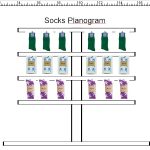Ecology, Ecosystem, Organism and Population and Community
- Answer question # 1 on page 22 (Critical Thinking)
- Define the following terms: Ecology, Ecosystem, Organism, Population and Community
Ecology
It is a word derived from Geek, in which it means “study of living relations or household”. Ecology is a scientific study of how organisms are distributed, their abundance and relations along with their interactions with the surrounding environment. It involves the study of relationships between populations and communities of both plants and animals and their ecosystems (Burke & Lauenroth, 2002). It tries to explain the life processes, and the way they interact with each other and adapt to their surroundings. The way in which the materials and energy move through the living commutes, and the processes through which the ecosystems are developed are also studied in Ecology.
Ecosystem
An Ecosystem can be defined as community of living organisms, along with their physical environment(non-living) in a given particular unit of space and all their interrelationships. Ecosystems can be of different sizes and types (Burke & Lauenroth, 2002). It can be broadly divided in to two categories depending on the constituents, first is abiotic that includes sunlight, minerals, soil, water, weather and the rest of the non-living components and the second one is based on all the living components, termed as biotic constituents. The flow of energy and cycling of nutrients are the two significant forces that connect the biotic and abiotic constituents in the Ecosystem.
Organism
It is a word derived from Greek, which simply means “life form or organ of sense”. Organism can be defined an any individual being that displays and shows the properties of life (Inkelas, Bowie & Guirguis, 2017). The specific characteristics of organisms are their ability to grow, develop, maintain, reproduce and also respond to any stimuli in their environment. Taxonomically, organisms are distributed starting from protists, bacteria, archaea which are unicellular microorganisms to plants, fungi and animals that are complex multicellular organisms. There can be two types of organisms – Prokaryote and Eukaryote. Bacteria and Fungi comes under prokaryotes whereas plants, animals and fungi come under eukaryotes.
Population and Community
The terms Population and Community are used in ecology to describe a group of different species inhabiting the same geographical space at a particular time. The nature around us exists at several levels of complexity (Inkelas, Bowie & Guirguis, 2017). They start from and individual to groups of population and then form a community by interacting with other organisms which leads to an ecosystem. The population of an organism in a community can be defined on the basis of size – number of individuals at a given space and time, density – number of individuals in a given space and time, distribution – how they are distributed with respect to one another, etc… Community ecology is basically the study of different populations of organisms and interactions with each other on spatial and temporal scales.
References
Burke, I., & Lauenroth, W. (2002). Ecosystem Ecology at Regional Scales. Ecology, 83(2), 305. doi: 10.2307/2680014
Inkelas, M., Bowie, P., & Guirguis, L. (2017). Improvement for a Community Population: The Magnolia Community Initiative. New Directions For Evaluation, 2017(153), 51-64. doi: 10.1002/ev.20229





